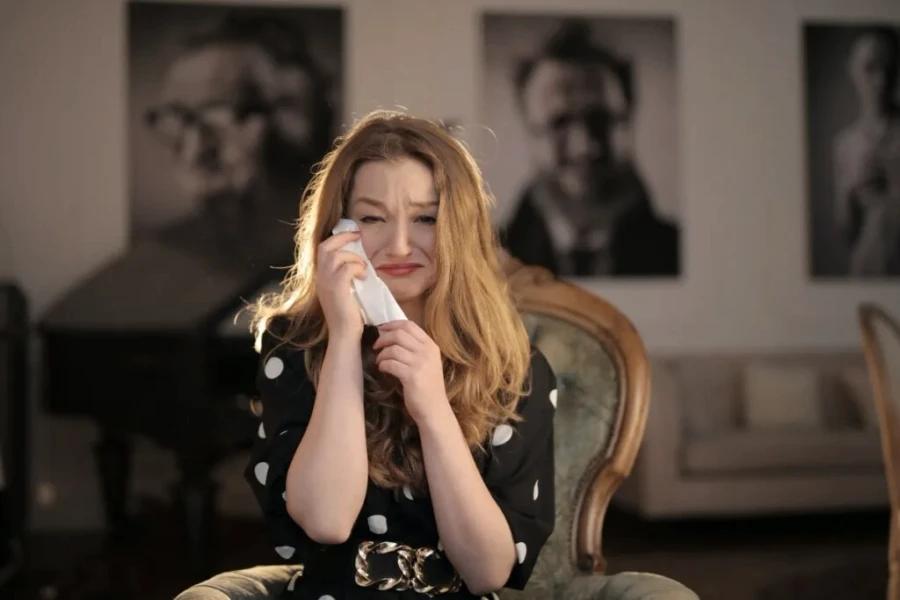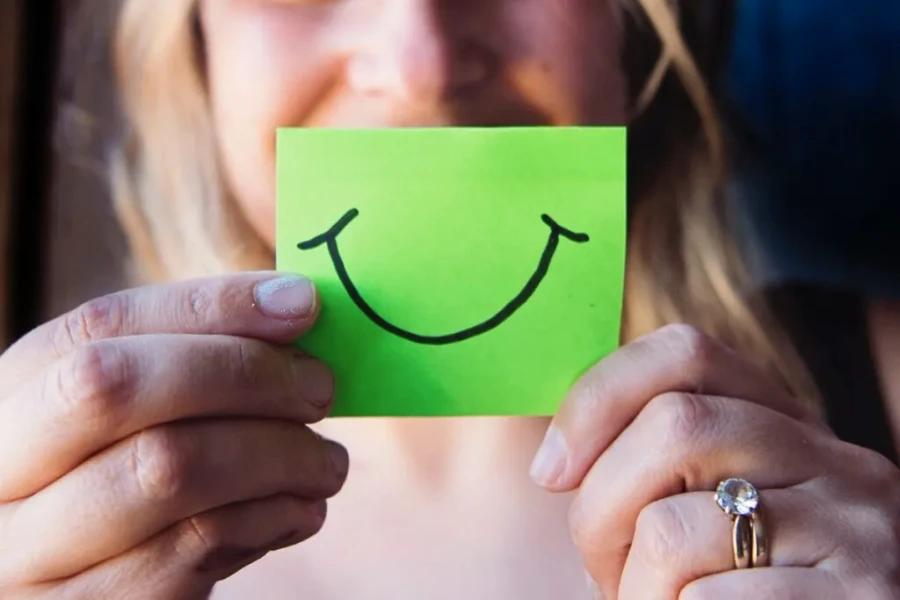41 Psychological Facts About Crying
Curated from: newinterestingfacts.com
Ideas, facts & insights covering these topics:
44 ideas
·25.7K reads
51
3
Explore the World's Best Ideas
Join today and uncover 100+ curated journeys from 50+ topics. Unlock access to our mobile app with extensive features.
41 Psychological Facts About Crying
Here’s the lowdown on everything psychological that influences our crying, as well as how people respond psychologically to us when we cry.
79
1.44K reads
After all, being able to cry from strong feelings and also being able to respond to those tears is an integral part of what it is to be human. Whether you’re weeping from love or mental pain, it’s one of those abstracts of human behavior that’s impossible to pinpoint but equally impossible to ignore.
There are plenty of reasons to tear up biologically, but even more for us to blubber on account of emotional reasons. We’re a pretty emotionally-driven species, after all.
77
1.17K reads
1. Tears Can Be Emotional
This may seem like an obvious one, but there are different classifications of tears. Basal tears care for the cornea, reflex tears guard against irritants, and emotional tears are produced when we feel something strongly.
83
1.14K reads
2. Emotional Tears Contain Hormones
When we cry from overflowing emotions, the hormones behind those feelings tend to make their way into our tears. These hormones aren’t present in standard basal tears or reflex tears, so emotional crying really is a release.
87
1.07K reads
3. Crying Also Relieves Pain
Yes, actual pain. They contain a neurotransmitter called leucine enkephalin, which is a natural painkiller that the body releases when under stress. So when you cry from physical or mental anguish, your body is literally trying to dull your pain.
96
1.01K reads
4. Women Cry More Than Men
Women have always been stereotyped as the weepy ones and men as the stiff-upper-lip lads, but there is research to back this up. On average, women cry two to four times a month, whereas men only tend to cry once every second month or so.
80
946 reads
5. Women Also Tend to Cry for Longer
Men are more likely to have short crying outbursts that last less than five minutes. Although plenty of women are also prone to keeping it short, as many as 38% said their crying sessions tended to last up to fifteen minutes. Hey, sometimes five minutes just isn’t enough.
76
859 reads
6. There’s More Social Pressure on Men Not to Cry
Sad but true. While they do cry less than women, it may not be because it’s natural for them to hold back their tears, but more that it’s a socially-required decorum. Although times are changing and men (and boys) are being encouraged to let loose their tears, it can be hard to unlearn the social norms of the past.
79
787 reads
7. Women Are More Likely to Cry When Feeling Helpless Than Men
When it comes to mundane everyday issues that might make you feel helpless in the moment, women tend to let the waterworks flow more easily. Sometimes all it can take is a computer crashing or the car not starting, and a woman might start crying. In the same scenarios, men simply tend to swear.
77
742 reads
8. Men Get Turned Off by Tears
Quite literally. A study on this hypothesis was conducted, and the results were that a man felt less sexually aroused when smelling a woman’s tears shed from negative emotions. It’s a bizarre study, that’s for sure. It has been contested by another scientist who said it might not be the tears’ chemicals but the act of crying itself that’s the turn-off.
79
775 reads
9. Crying Helps Us Bond
Tears seem to be a strong signal to other humans that you need some help. Seeing someone else cry can inspire empathy and cause you to cry in response or simply feel more connected to them because of that same empathetic response.
79
699 reads
10. There Are Five Most Common Reasons for Crying
On a bad day even a dropped snack will make you burst into tears, but there are some universal situations that are the most common causes of blubbering. They are loss (either from death or the end of a relationship), helplessness, physical pain, empathetic crying, and extremely positive or very moving situations (tears of joy).
79
699 reads
11. All Babies Cry the Same
Though their crying habits and causes may change a lot as they age into adulthood, there is no difference between how much male and female babies cry.
76
655 reads
12. Men Learn From a Young Age Not to Cry
We’ve already discussed how men cry less , possibly from social influences. But now you know that those influences take place in late childhood, when they’re at their most vulnerable to peer and familial influences.
76
621 reads
13. Your Attachment Style Can Define Your Crying Sessions
There are several different attachment styles depending on your personality These refer to the way we form relationships with other humans, from romantic or familial to platonic. People with an avoidant attachment style tend to cry less than people who have an anxious or secure attachment style.
76
581 reads
14. 1st World People Cry More
As it turns out, people in wealthy democratic countries cry a lot more than people in countries that are less better off. Conversely, people who are oppressed tend to cry less, even though they may have more to cry about.
81
607 reads
15. Seeing Someone Cry Changes How We Think of Them
It may make us feel they are more empathetic, more sincere, and less aggressive. It might also have the ulterior effect of making us perceive them as less emotionally stable. Either way, it can change the way we see them.
77
587 reads
16. Where You Cry Is Important
Crying in private is one thing. Having a massive breakdown in the middle of your office is another. Though tears can’t be helped at times, public crying is viewed by witnesses more negatively than if you find a private space.
75
570 reads
17. Crying Makes You Feel Better…Usually
It is an emotional outlet, after all. About 50% of the time, letting go and having a good crying session will make you feel better afterward. But around 10% of people actually feel worse after they’ve cried.
78
501 reads
18. Having Support Makes a Difference
If you want to feel better after a good old-fashioned blubber session, you’re more likely to if you have supportive people around you to provide comfort. If you’re on your own, you might be more likely to be in that previously mentioned 10%.
77
480 reads
19. Therapy Can Make You Tear Up
Therapists keep boxes of tissues on that convenient little table next to you for a reason. In about 15% – 30% of therapy sessions across the board, crying is likely to occur. It’s understandable, seeing as they’re usually digging up traumatic issues and healing wounds from childhood.
75
436 reads
20. Crying in Therapy Leads to a Higher Success Rate
Perhaps it’s because of that comforting person supporting you, but patients who cry in psychotherapy are more likely to have a better outcome than those who don’t. It’s all part of emotional expression, so don’t feel shy letting the tears fly in front of your therapist.
76
416 reads
21. It’s Emotionally Soothing
When ice cream and carbs can’t even help, tears are the body’s ultimate way of self-soothing. Crying helps us regulate our own emotions, and it enables us to calm down from the emotional or physical pain we’re trying to deal with.
76
424 reads
22. It Has a Physical Effect on Our Stress
Crying activates the parasympathetic nervous system, which is what helps us relax. If you’re having a really frustrating day and feel that tightening of the throat that makes you realize you want to cry, better to let it all out and get rid of the stress.
79
401 reads
23. It’s Nature’s Distress Signal
Crying in public is like sending a distress beam to the universe declaring, “here is someone in need of help,” and it does tend to cause sympathetic people to rally around you. So crying can have a social benefit that calls others to your aid, alleviating your mental stress.
77
385 reads
24. Crying Hormones Improve Your Mood
When you cry emotional tears, oxytocin and endorphins are released. Both of these improve our mood and are usually known as the “feel good” chemicals. It’s the same reason we go carb-crazy when we’re experiencing a depressed mood — our brain craves that boost of endorphins to help us feel better.
77
383 reads
25. It Might Help You Sleep Better
In 2015 a study was conducted on babies, and it turned out that they tended to sleep better after crying. There hasn’t been a study to determine if the same thing happens to adults, though. But it’s believed that the same chemicals released in emotional tears that cause pain relief and have calming effects can help lull us into dreamland.
76
343 reads
26. Crying Neutralizes Anger Fast
It can be a powerful weapon in that respect. If someone is angry with you, you’re more likely to switch their mood if they see you cry. This is not only because crying is meant to evoke empathy and make you appear helpless but also because it might make the person who is causing the crying to feel guilty and stop.
75
352 reads
27. You Might be More Aggressive if You Don’t Cry
Being someone who doesn’t cry much isn’t necessarily a virtue. People who don’t cry a lot tend to withdraw into themselves more, and their relationships have less connection. They also tend to experience more negative and aggressive feelings like rage, disgust, and anger.
75
355 reads
28. You Can Be “too Depressed” to Cry
People with certain forms of clinical depression are counterintuitively less likely to cry. They stop feeling the urge to cry because they have a deep-seated belief that nothing can fix their suffering. This belief is enough to stop their lacrimal glands in their tracks. If you find yourself in this situation, reach out to a trained professional for some help if you haven’t already.
77
364 reads
29. Happy Tears and Sad Tears are the Same
At least, in terms of purpose, there isn’t much difference between crying from joy and crying from sadness. In both cases, the crying serves the same need of expressing the overwhelming emotion at hand and allowing you to return to a state of equilibrium with regard to mood.
76
343 reads
30. There’s a Crying Condition
It’s called Pathological Laughter and Crying (PLC) , and it’s when a person can spontaneously burst into either laughter or tears at any given moment. There is no appropriate stimulus for such reactions, so it’s classified as a condition. It’s commonly associated with Alzheimer’s disease, strokes, and other brain diseases, so best to see the doctor if you’re often busting into random giggles or crying fits.
77
366 reads
31. “Crocodile Tears” Aren’t What You Think They Are
When we say people cry crocodile tears, we tend to think of giant anime-sized blobs of water streaming from our eyes in over-the-top sobs. But what it actually refers to are people who are faking their sadness and, ergo, their tears. The phrase originates from a story about some crocs who killed a group of men and then cried while eating them.
76
398 reads
32. Romans Wept With Romance
There are plenty of examples of writing from the Roman Empire that linked weeping to romantic pleasure. It was based on the belief that crying made someone more desirable to their lover. The same sentiment might not quite carry over into the modern world, but shedding a delicate tear or two while being intimate can still be considered romantic.
76
365 reads
33. Crying Gets Things Done
Sometimes the real reason we turn on the waterworks is to simply get our needs met. Whether it’s finally getting your partner to pack the dishwasher or getting some much-needed attention in a specific area of our lives, the cause is the same.
That’s not to say it’s intentionally manipulative. When people get frustrated and can’t figure out how else to get what they need, a natural reaction is to resort to tears.
76
312 reads
34. Your Culture Can Determine How Much You Cry
Culture and heritage play a huge factor in how you grow up and what you consider to be normal. This might relate to expected behavior as well. In some cultures, crying is far more acceptable than in others. So you may feel more free to cry on a psychological level depending on your background.
73
298 reads
35. It Helps You Grieve
The loss of a loved one is tough on everyone. Crying is a normal response, but it turns out it might be our body’s way of helping us process and accept the loss. Everyone grieves in different ways, so you might cry more or less depending on your personality and how you cope with grief. There’s no need to force it, but if you feel the need, embrace it and let yourself heal.
75
280 reads
36. We Cry Less Over Pain as We Age
As children, the most common emotional trigger for our waterworks is physical pain. It makes sense as kids don’t always understand their physical limits yet and make poor life decisions leading to injury more commonly than adults. Adults also become more capable of dealing with physical pain in other ways (swearing is a common one).
73
311 reads
37. Adults Have a Broader Range of Causes for Emotional Tears
As we get older, other triggers start to take over as our predominant tear-jerkers. Attachment-related pain, sentimental thoughts, and moral feelings, as well as compassion and empathic nature, take over and cause the tears to flow.
74
329 reads
38. Your Limbic System Gets Involved Making Emotional Tears
When emotional tears are being produced, your limbic system — the part of your brain that’s associated with emotional arousal — signals the Pons , which is your brain’s message station. The Pons then sends a signal to your lacrimal system to produce tears. This is unique from basal and irritant tears, where only the lacrimal gland is involved.
76
318 reads
39. Emotional Tears Might be a Purging of Stress Hormones
Leu-enkephalin is a stress hormone and is commonly found in emotional tears. Scientists have a hypothesis that crying is an actual purging of the stress hormone itself, and that’s what makes you feel calmer. There are other scientists who claim this is not the case, so further studies are needed.
75
334 reads
40. Crying Can be a Safety Valve
When we’re undergoing extreme mental or psychological stress, crying is an important action that helps protect the brain and our physical health. If we refuse to allow ourselves to cry, we end up doing what is called “repressive coping,” and it can be very bad for our health.
Studies have linked this repressive coping tendency to lower immune system functionality, cardiovascular disease, and hypertension, as well as mental health conditions.
79
310 reads
41. Only Humans Cry Emotional Tears
Though all animals tend to have eye lubrication and can shed reflex and basal tears, only humans can cry from emotion. As much as we’d love to believe Lassie is crying from compassion, there’s probably just some dirt in her eye.
75
407 reads
IDEAS CURATED BY
CURATOR'S NOTE
41 Psychological Facts About Crying
“
Tom Joad's ideas are part of this journey:
Learn more about parenting with this collection
How to handle conflicts
How to identify and regulate emotions
How to develop self-awareness
Related collections
Similar ideas
24 ideas
21 Psychological Facts About Sadness (2023) Most People Don't Know I Interesting Facts
newinterestingfacts.com
26 ideas
21 Fascinating Psychological Facts about Relationships (2022) Most People Don't Know
newinterestingfacts.com
42 ideas
39 Psychological Facts About Friendship (2022) Most People Don’t Know I Interesting Facts
newinterestingfacts.com
Read & Learn
20x Faster
without
deepstash
with
deepstash
with
deepstash
Personalized microlearning
—
100+ Learning Journeys
—
Access to 200,000+ ideas
—
Access to the mobile app
—
Unlimited idea saving
—
—
Unlimited history
—
—
Unlimited listening to ideas
—
—
Downloading & offline access
—
—
Supercharge your mind with one idea per day
Enter your email and spend 1 minute every day to learn something new.
I agree to receive email updates












